The Casual Gardener – How to Find a Perennial Plant That Spells Success
Dear Casual Gardener,
Gardening is a new thing to me. Are there any perennials which are easier to grow? When is the best time of the year to plant my perennials? How do I find them? Where do I find better pricing? I’ve been digging a hole and throwing them in during the summer and nothing survives. I have hot South sun in my front yard and complete shade in my backyard. How do I spell success? HELP!!
Signed, Paranoid Plant Killer
= = = = = = = = = = = = =
Dear Paranoid,
NO WORRIES! Let me guide you to planting paradise, not planting paranoia!!
There are many things that spell the successful health of a plant. Your email does not give me all the details it would take to give you a perfect “prescription”. For example, I do not know your zone hardiness or your typical soil content (clay, sand, rock, etc.). However, I can give you some general guidelines to perk up those posies.
The #1 key to success is a properly created bed. Digging a hole and plopping a plant in is typically fine for native plants, but to have a really strong, vigorous perennial with successful growth, I would suggest amending and digging the soil properly to aerate it would help improve your odds of success greatly. Contact your local nursery for their advice.
After that, in true casual gardener style, my advice is to keep it simple and easy. Trying to plant complicated plants that require a LOT of personal attention (like Climbing Roses or Himalayan Blue Poppies) might be a big mistake for a first time gardener. My advice is to go to the giant garden centers of the world for basic plant inspiration. Their main concern is bottom line dollar. The plants they sell sometimes lack originality, however, they typically are hardy, strong varieties that make a good show in the perennial garden as well as on the shelf. The giant garden centers normally guarantee all their plants for one year. My strong recommendation is to save all your receipts and original pots from the store, so if you plant the wrong thing, you can return it if it does take a turn for the worst.
If you want personalized service and far more plant variety, local nursery’s and online specialty stores are fantastic. Most nursery’s have something very special to offer you – love and tender care for both you and your plants. First time gardeners can get a lot of advice by going to a nursery with a good reputation and asking questions.
When shopping, search for plants that are alive, well and vigorous with no demonstration of rotting or dead branches and leaves. Plants should not be root bound or exhibit diseased leaves.
My garden is filled with a few happy accidents, however, I usually try to lay out a plan for the garden before I plant it. Placing sun loving plants together and/or shade loving plants together, I follow the instructions on the little signs attached to the planting pots. Sounds remarkably easy doesn’t it? It is obvious – normally if you place a plant that requires full sun in a spot that has mostly shade, it is not going to do so well. Follow the plant package directions. Simple! Simple! Simple!
The type of plant you choose can make or break your garden. Do you have pest problems in the area? Even if you do not, I would target plants and bulbs as my first choice that have a tag stating deer or pest resistance such as Daffodils, Alliums, Ajuga, Columbine, Coreopsis, Daylily, Echinacea, Hosta, Hydrangea, Mum, Nepeta, Russian Sage, Salvia, Yarrow, and more. These plants are easy to grow, offer resistance to pests and might have a better chance of survival. On a secondary level of importance, I search for plants that are hardy and vigorous growers for the particular conditions specific to the garden. For example, my yard is mostly shade. There are not a lot of flowering perennials which grow in shade, so I try to balance that with leaf color and texture. I have lots of varieties of Hydrangea and Hosta. Some same types grouped together and some beds all mixed up with every color imaginable. For full sun my favorite plants are Russian Sage – which is almost indestructible – and a small bush rose called “Knock-Out”. It is a variety that offers all the beauty of a traditional rose, but with virtually no maintenance.
My favorite times to plant a perennial garden are in the fall before heavy frost and early Spring after heavy frost. Both times ensure cooler, wetter weather, so you have the advantage of kicking the plants off to a good start without a lot of watering expense. To plant, first dig a hole in the ground twice as large as the current pot. Gently remove the plant from its pot and “tease” the roots gently. Place the plant in the ground, slightly below the soil line. Place all the loose soil back in around the plant, pat gently and leave a little “ring well” of ridged up soil around the plant base allowing it to retain some extra water. When all the plants are in, water in very heavily. Fertilize after the plants have been in the ground for one week. Water regularly. I prefer mulching the garden with my preferred mulch a week or so after planting, being careful not to smother the plant by covering the “crown”.
TA-DA!!!! Easy and simple Planting Paradise!! Remember – keep it simple. After you understand the basics of buying, retaining and planting perennials, it will be much easier to branch out and try new plants with more complicated requirements.
Shawna Coronado says Get Healthy! Get Green! Get Community!
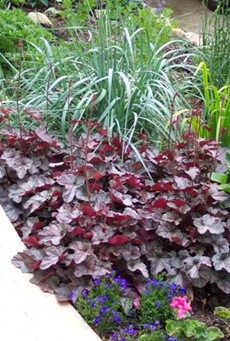
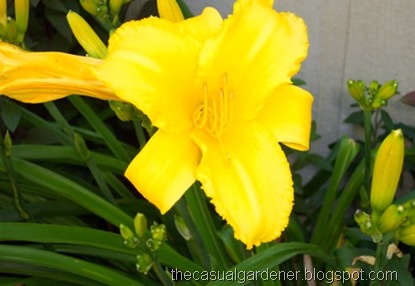
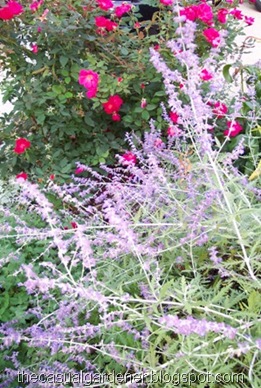

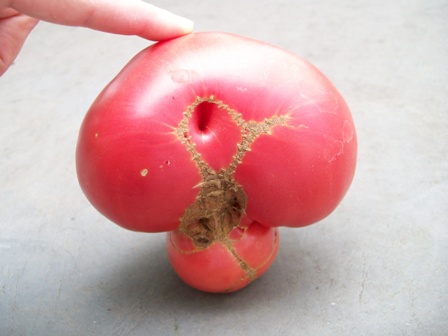
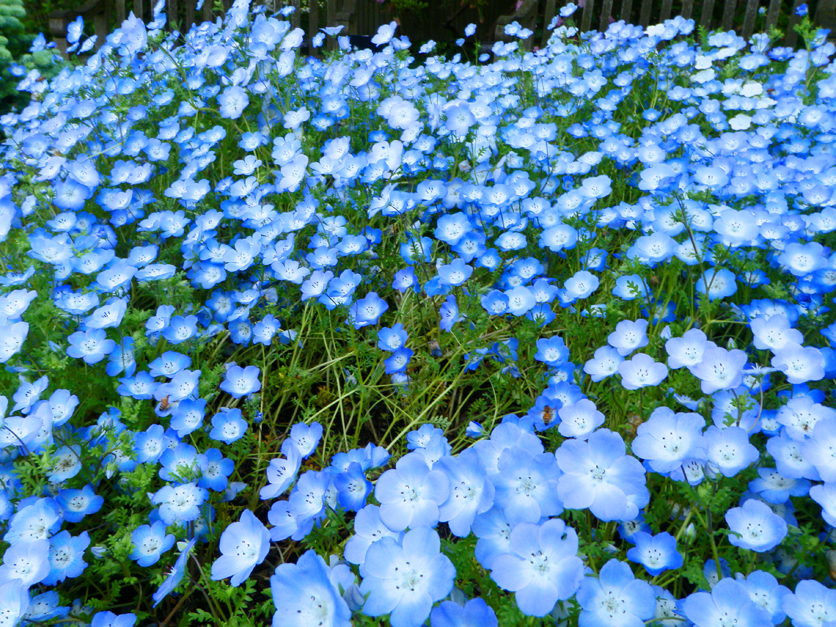
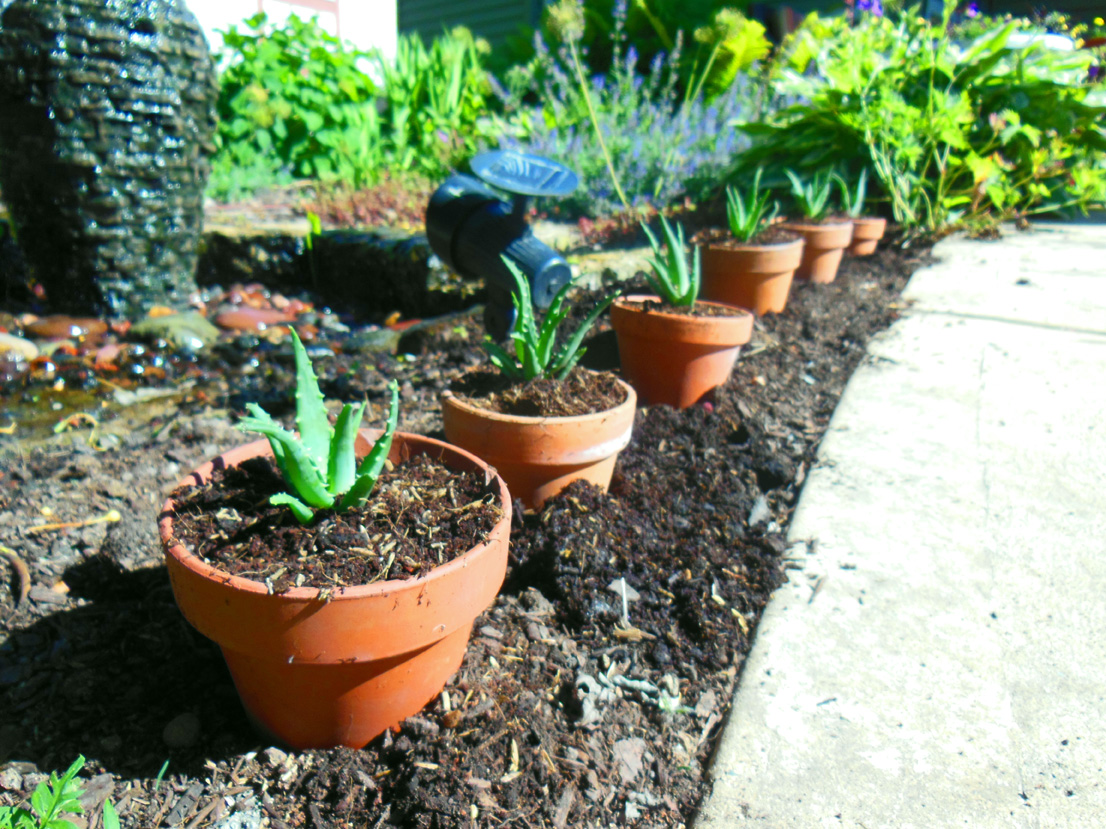
Great post Ms. Shawna. I’d also recommend to Paranoid Plant Killer that they drive around and see what’s planted in the landscapes of local fast food joints like Burger King, McDonald’s and the like. They plant tough as nails perennials that don’t require nothin more than goin in the dirt green side up.